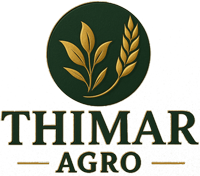The Lifecycle of a Grain: From Farm to Warehouse
Every grain of wheat, rice, or lentil that ends up in a warehouse or on a plate has undergone a long, intricate journey. Understanding this lifecycle is crucial for anyone involved in food production, distribution, or trade. This article breaks down each stage in the grain supply chain — from cultivation to final delivery — highlighting the complexities, risks, and best practices that ensure quality and reliability.
1 – Cultivation and Harvesting
The lifecycle begins on farms in grain-producing regions across the world. Each variety of grain — whether it’s wheat, corn, rice, or pulses — requires specific climatic and soil conditions. Farmers plant seeds, monitor crop health, and time the harvest carefully to ensure peak nutritional value and yield. Seasonal factors, pest control, and sustainability practices all influence the quality of the final harvest.
2 – Post-Harvest Processing and Quality Assessment
After harvesting, grains undergo cleaning, drying, and grading to meet market standards. Moisture content, kernel size, and impurity levels are closely monitored. Quality assurance at this stage is essential, as post-harvest losses can affect both economic value and food safety. Traders and procurement teams often rely on certified labs and inspections before purchase agreements are finalized.
3 – Storage and Packaging for Transport
Proper storage conditions — temperature, humidity, and pest control — are crucial to maintain the grain’s integrity. From airtight silos to jute sacks, the choice of storage depends on the type of grain and destination. Once ready, products are packaged and prepared for international or regional shipping. Documentation, labeling, and compliance with import/export regulations are handled in parallel.
4 – Global Logistics and Supply Chain Management
Grains are typically transported via container ships, trucks, or rail, depending on the route and region. Logistics partners must ensure that transit conditions do not compromise quality. Efficient coordination across borders and compliance with customs and food safety protocols are key to avoiding delays and spoilage.
5 – Delivery to Distributors and Warehouses
The final leg of the journey involves moving the grain from port or depot to wholesalers, manufacturers, or retail distributors. Timing and handling are critical here, especially for businesses that depend on just-in-time inventory. A reliable supply chain ensures that buyers receive clean, high-grade product ready for packaging, processing, or distribution.
6 – Building Resilience in the Supply Chain
With rising global demand and climate unpredictability, resilience in grain supply chains is more important than ever. Traders and distributors are increasingly investing in diversified sourcing, real-time tracking, and digital documentation to mitigate risks. Flexibility and trust across the chain — from farmers to final buyers — make the difference between disruption and success.
The journey of a grain from field to warehouse is a coordinated effort involving farmers, inspectors, logistics experts, and traders across the globe. For businesses in the food industry, understanding this lifecycle helps in making informed decisions, building reliable partnerships, and ensuring consistent product quality.
Organizations like Thimar Agro, based in Dubai, operate within this ecosystem — managing sourcing, logistics, and delivery across continents to help meet the growing demand for quality agricultural products.

